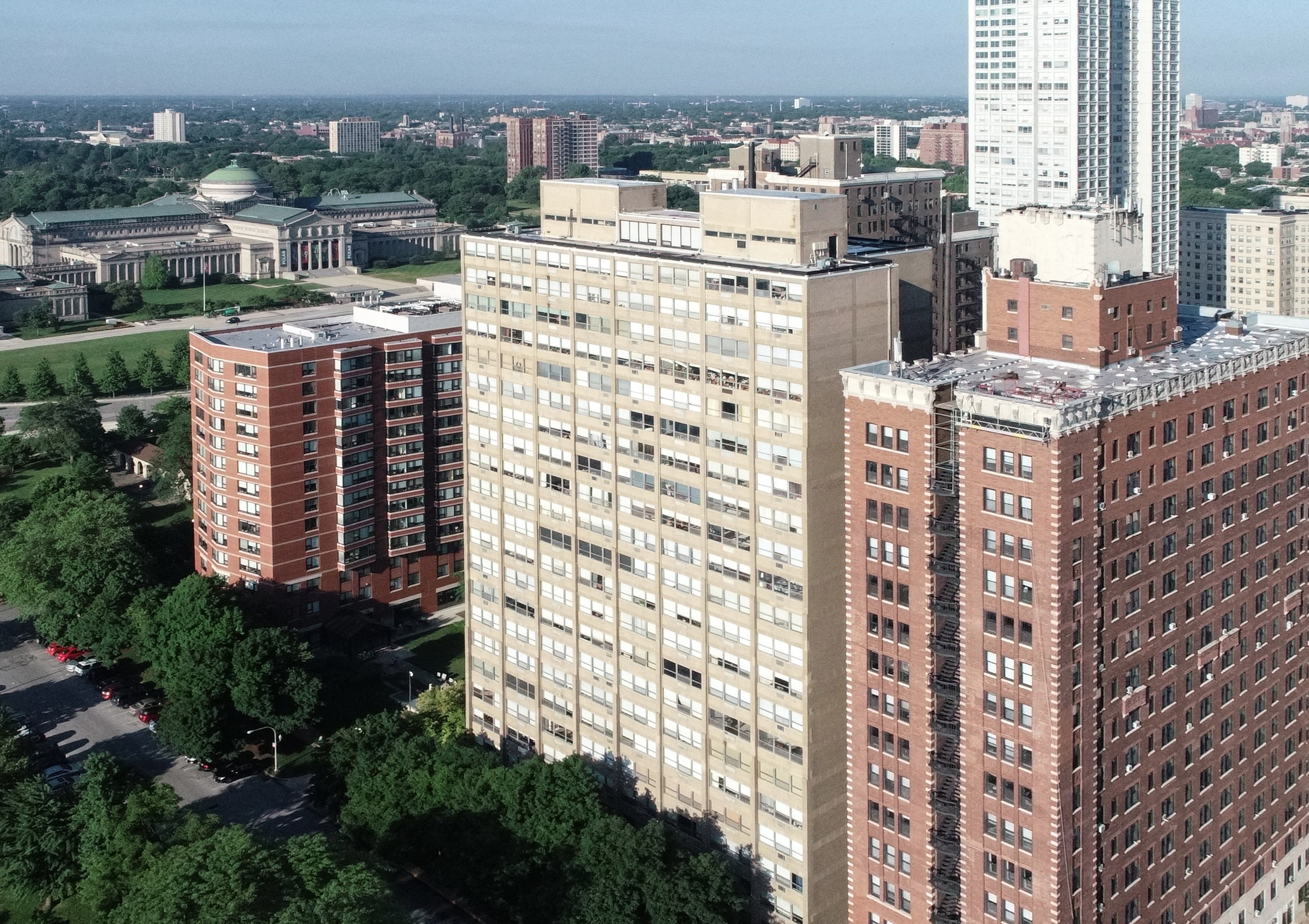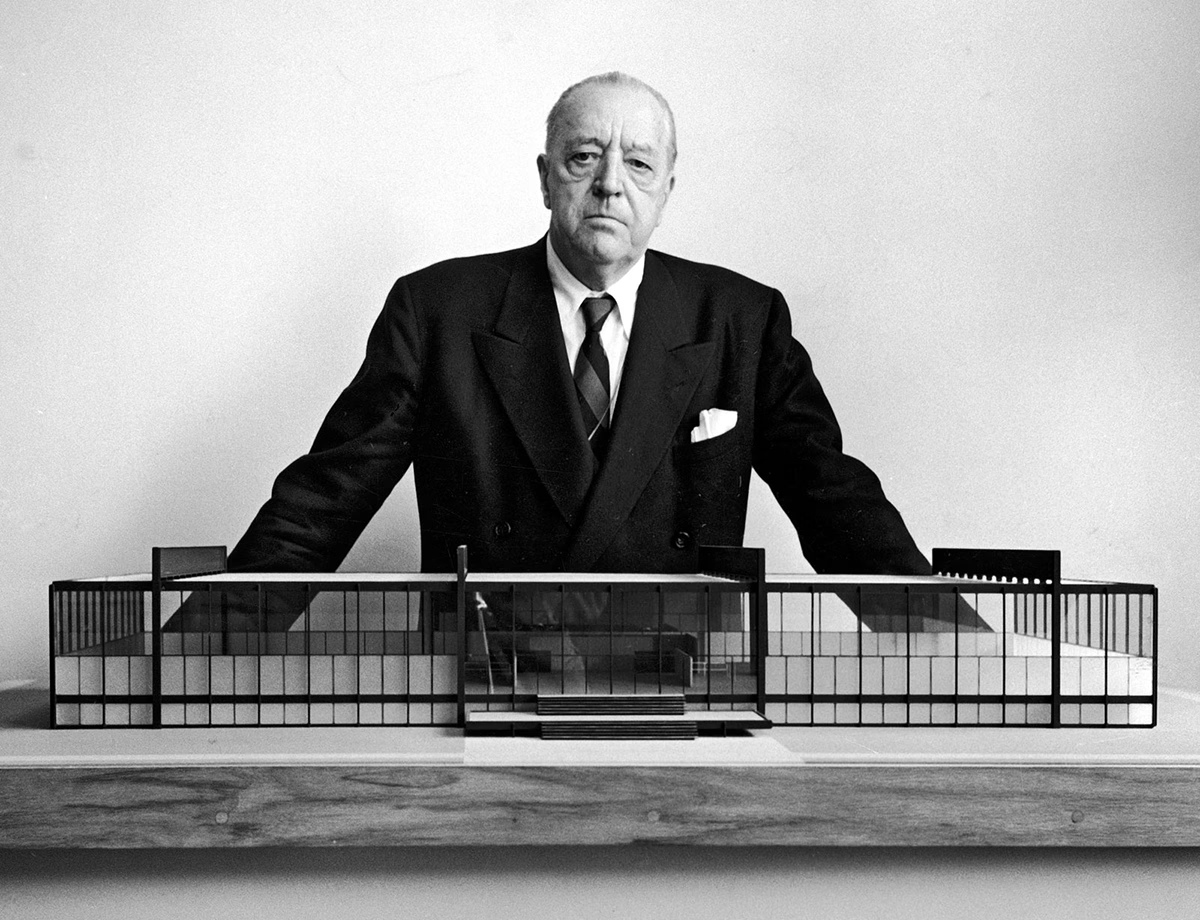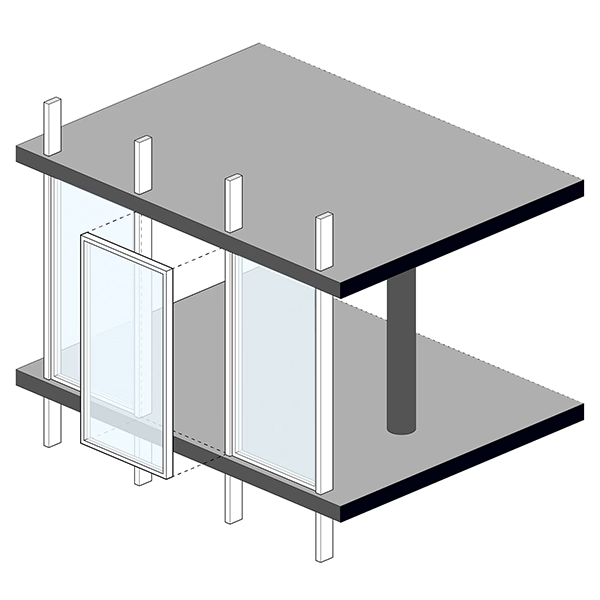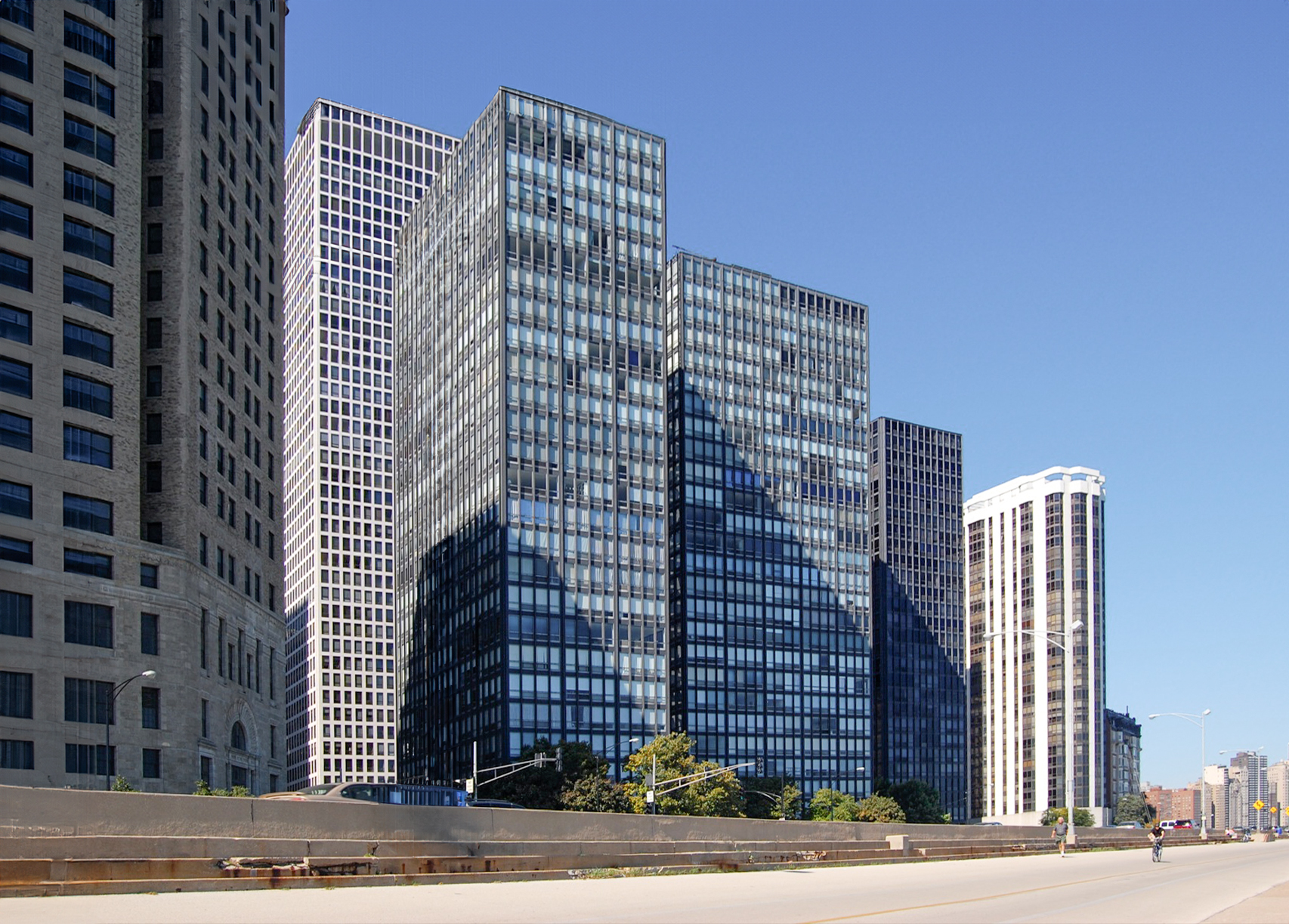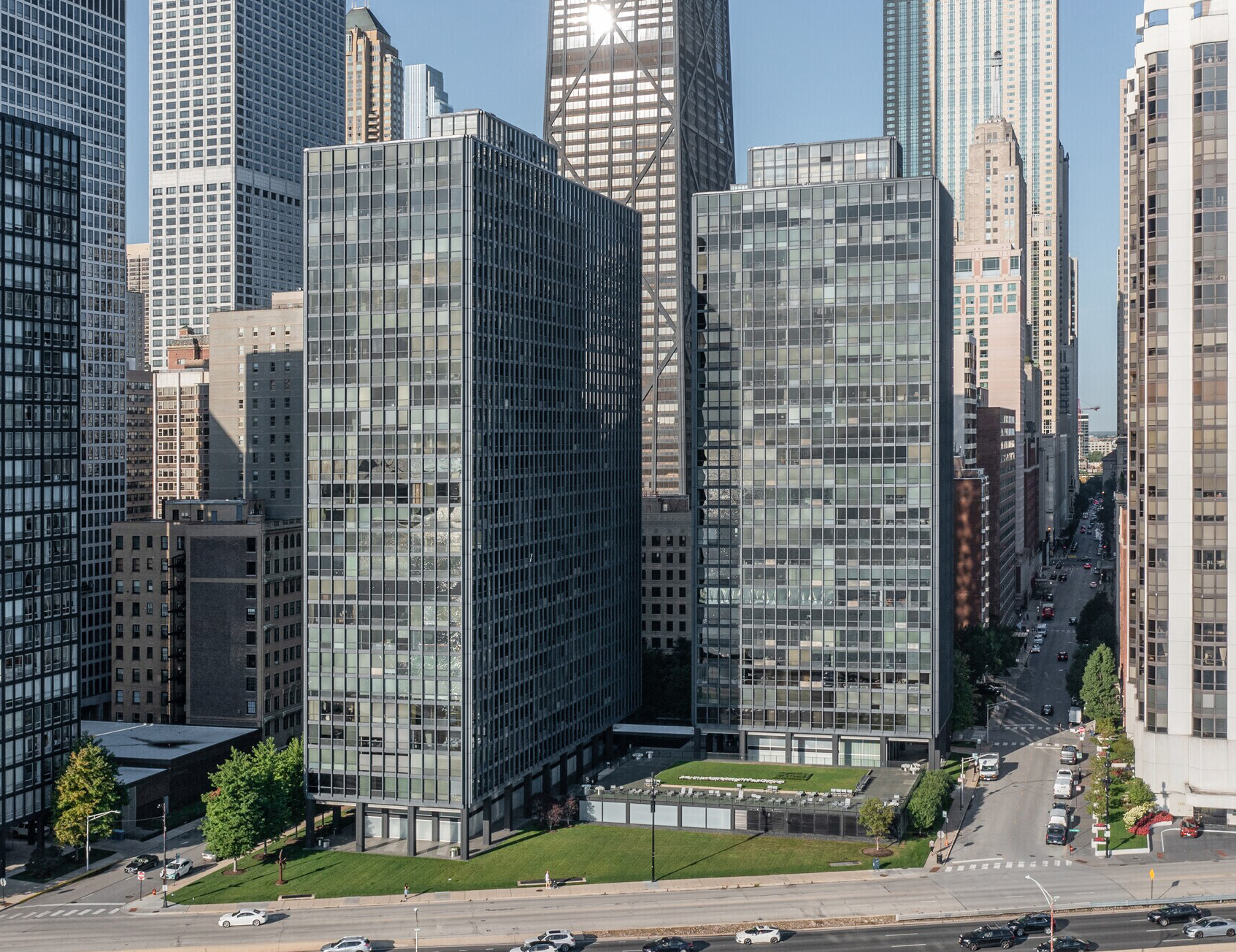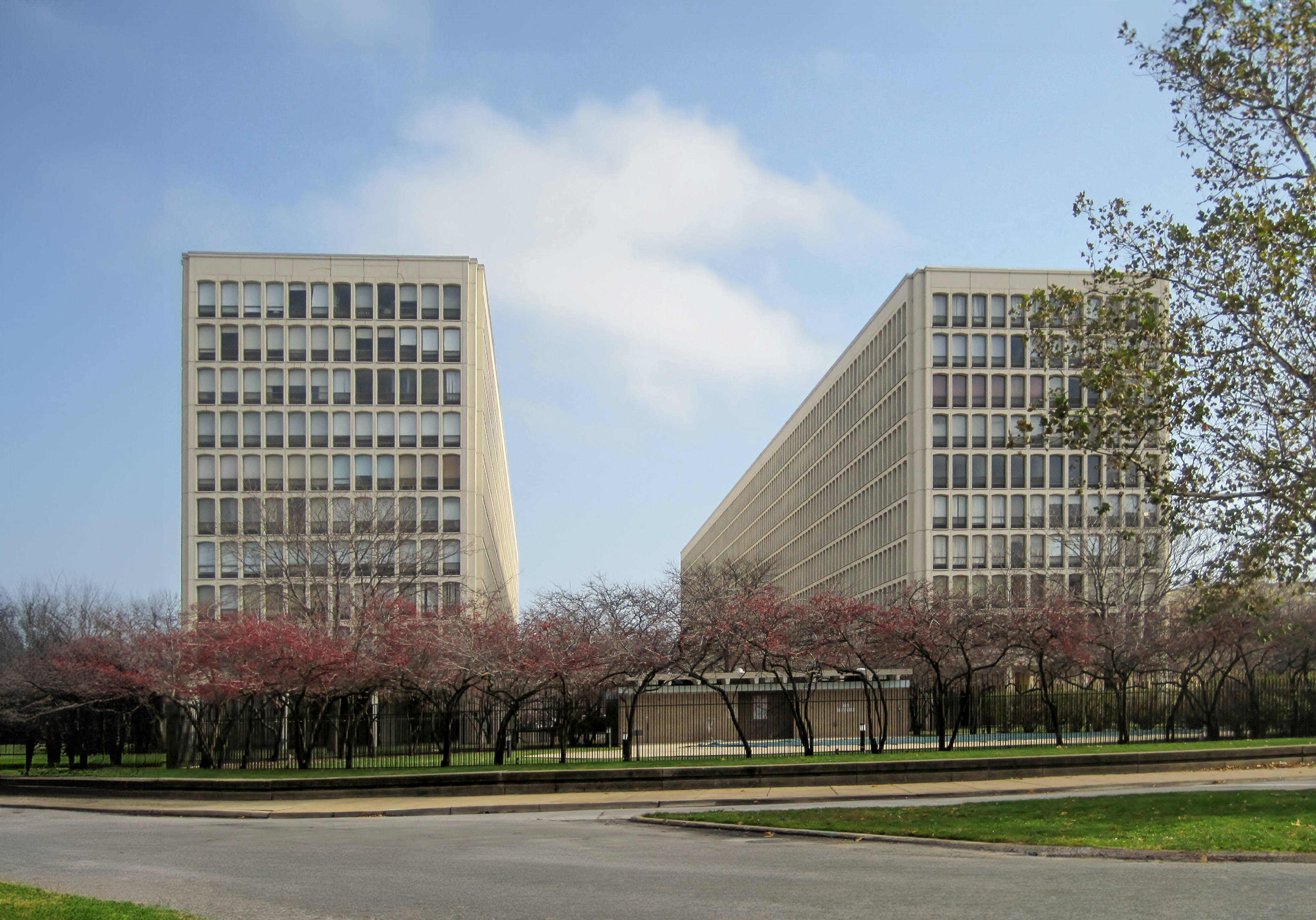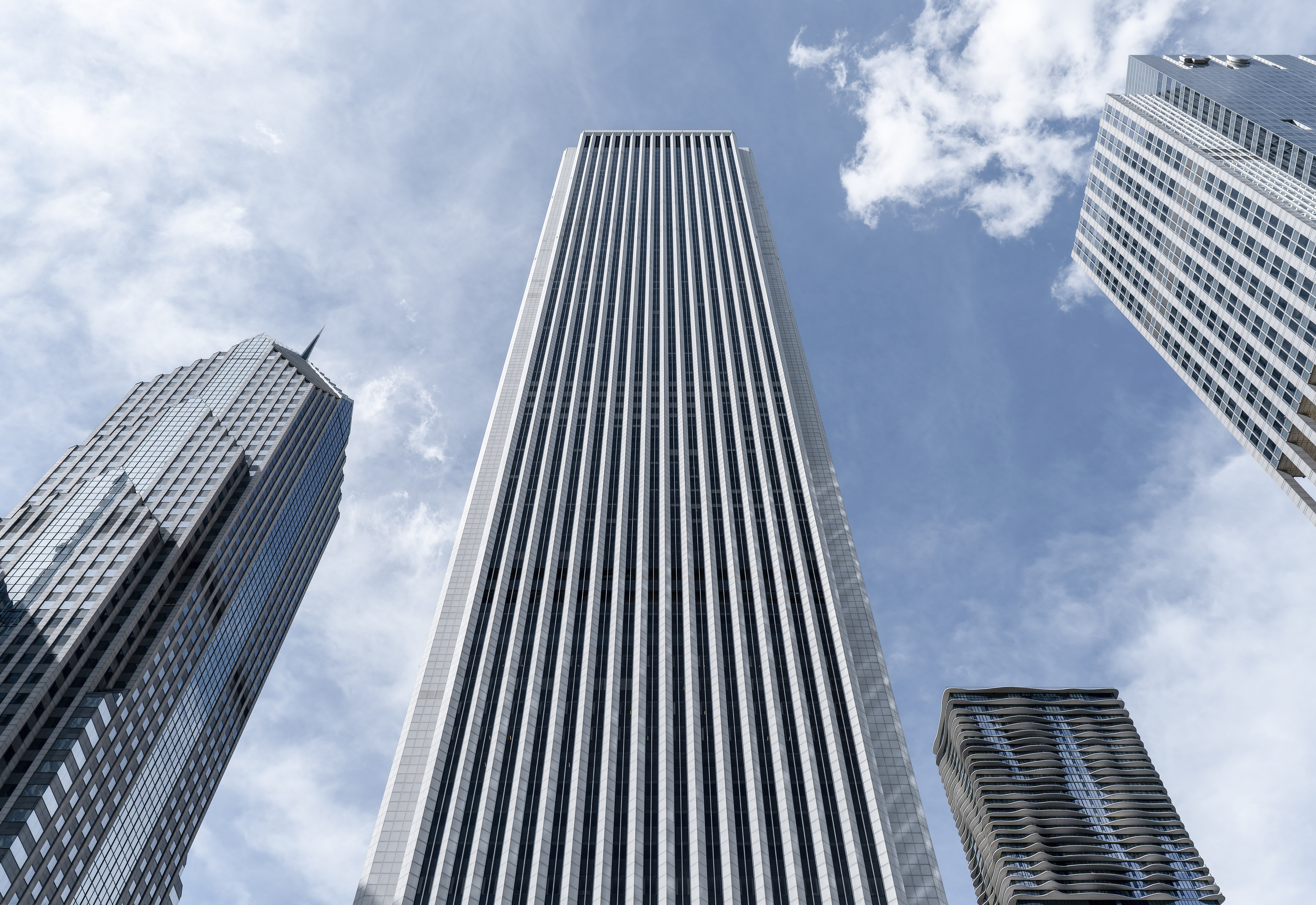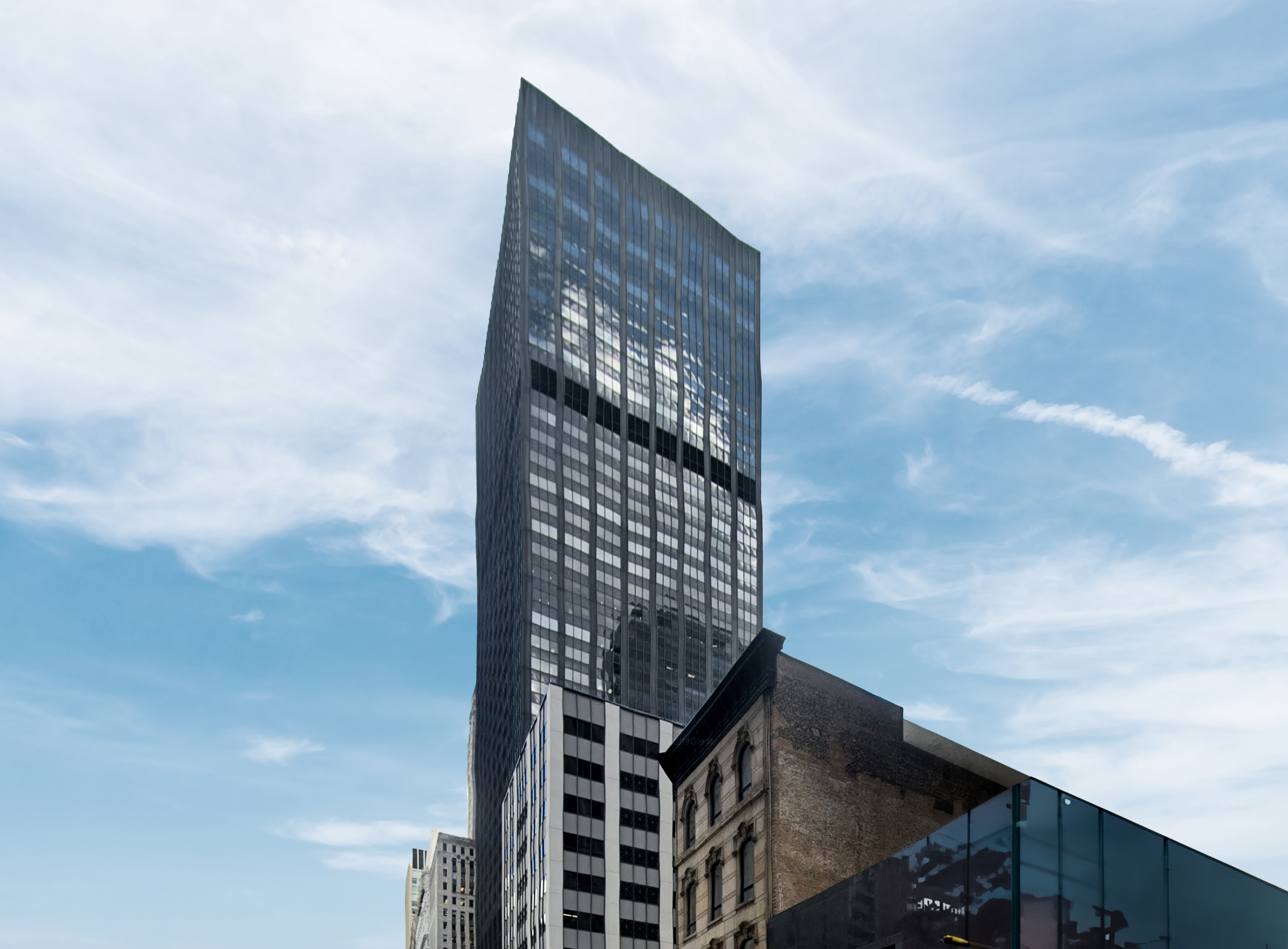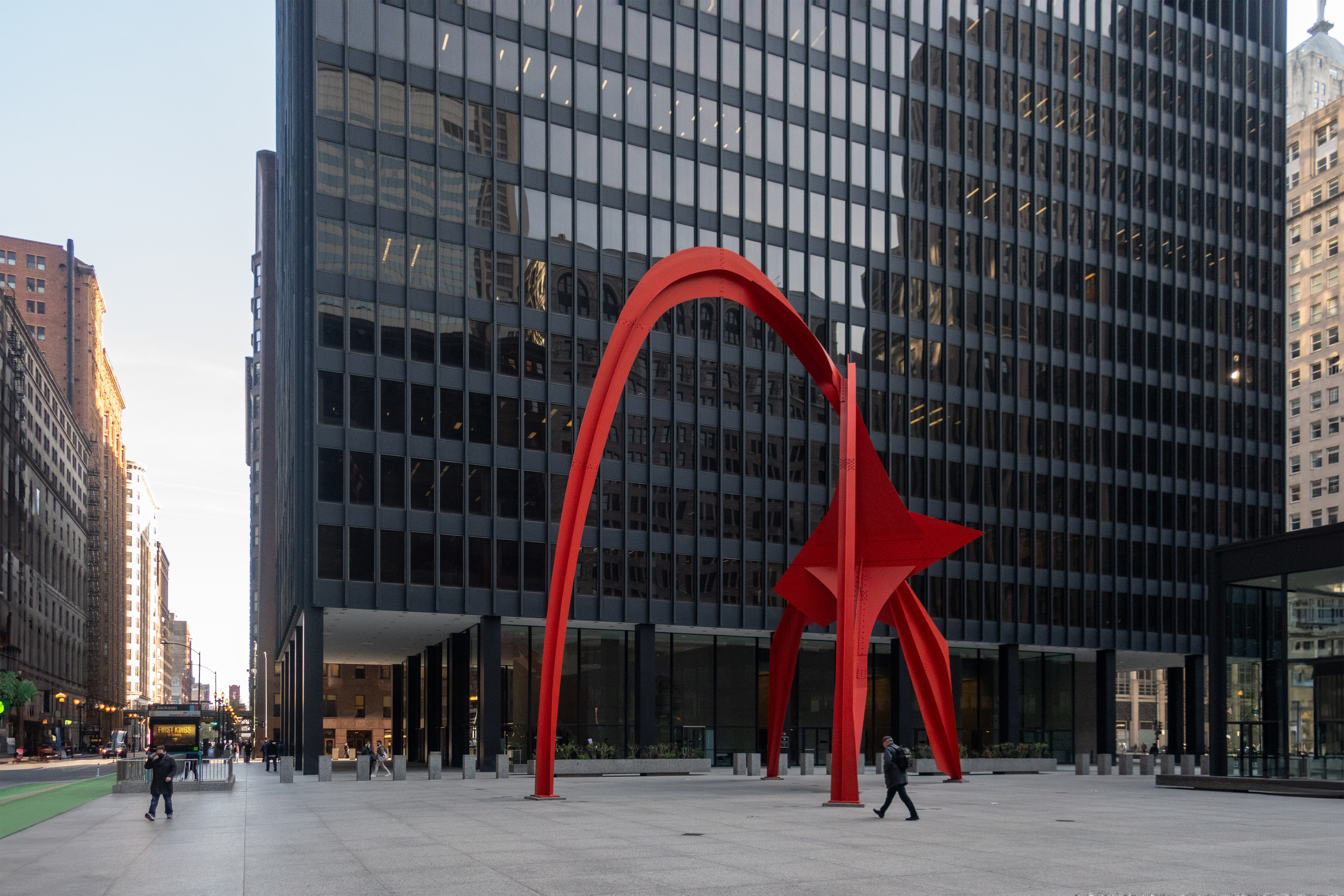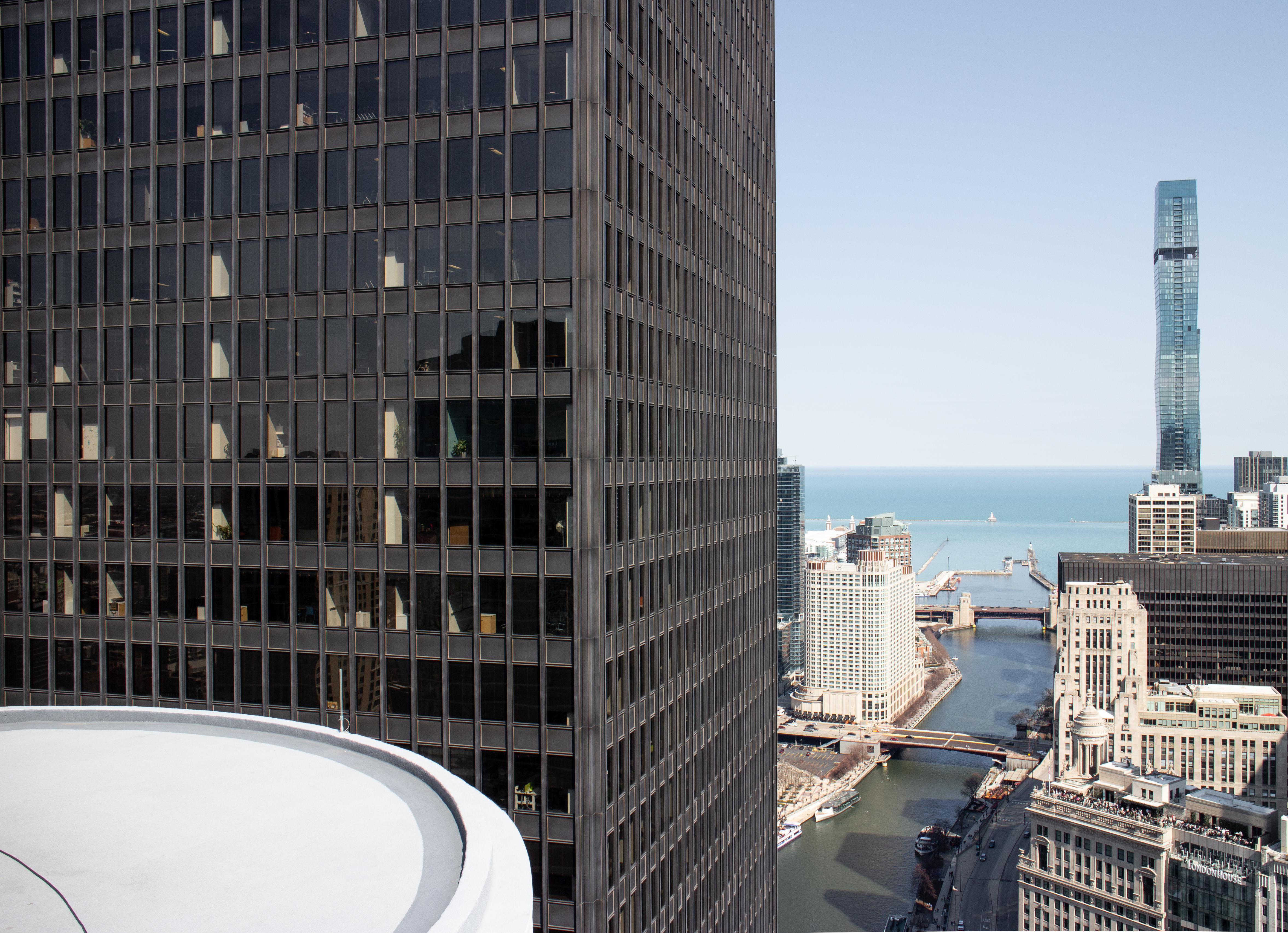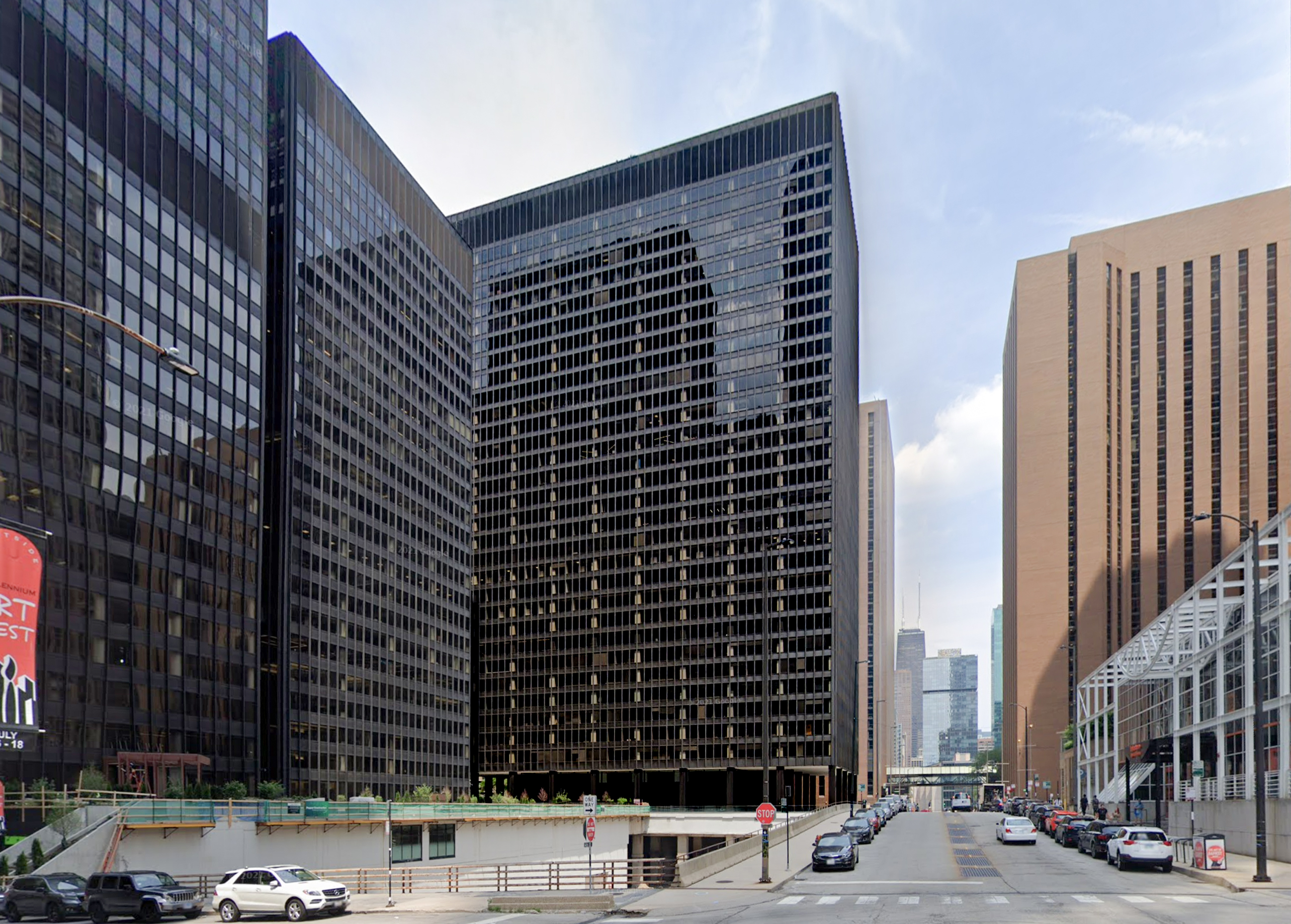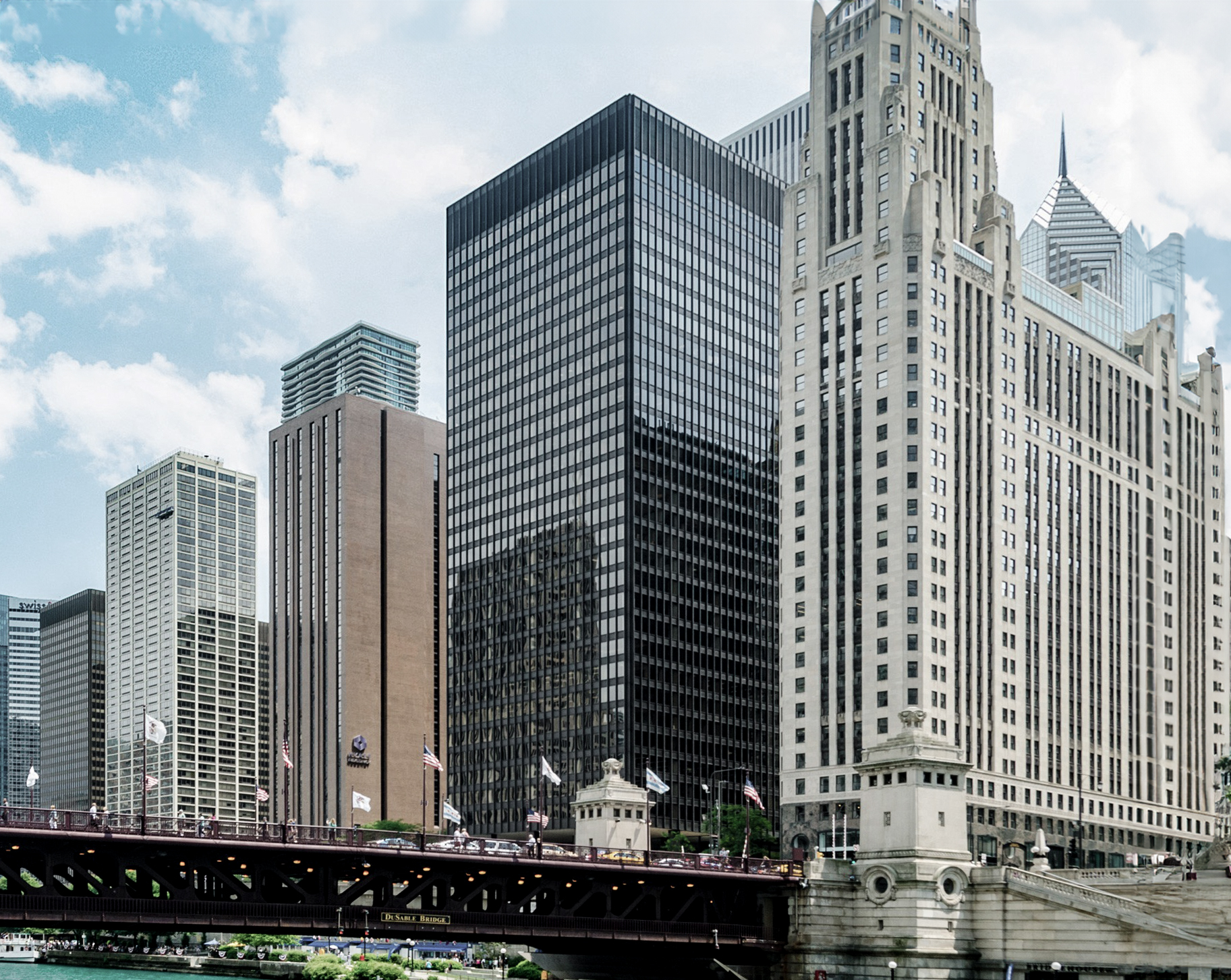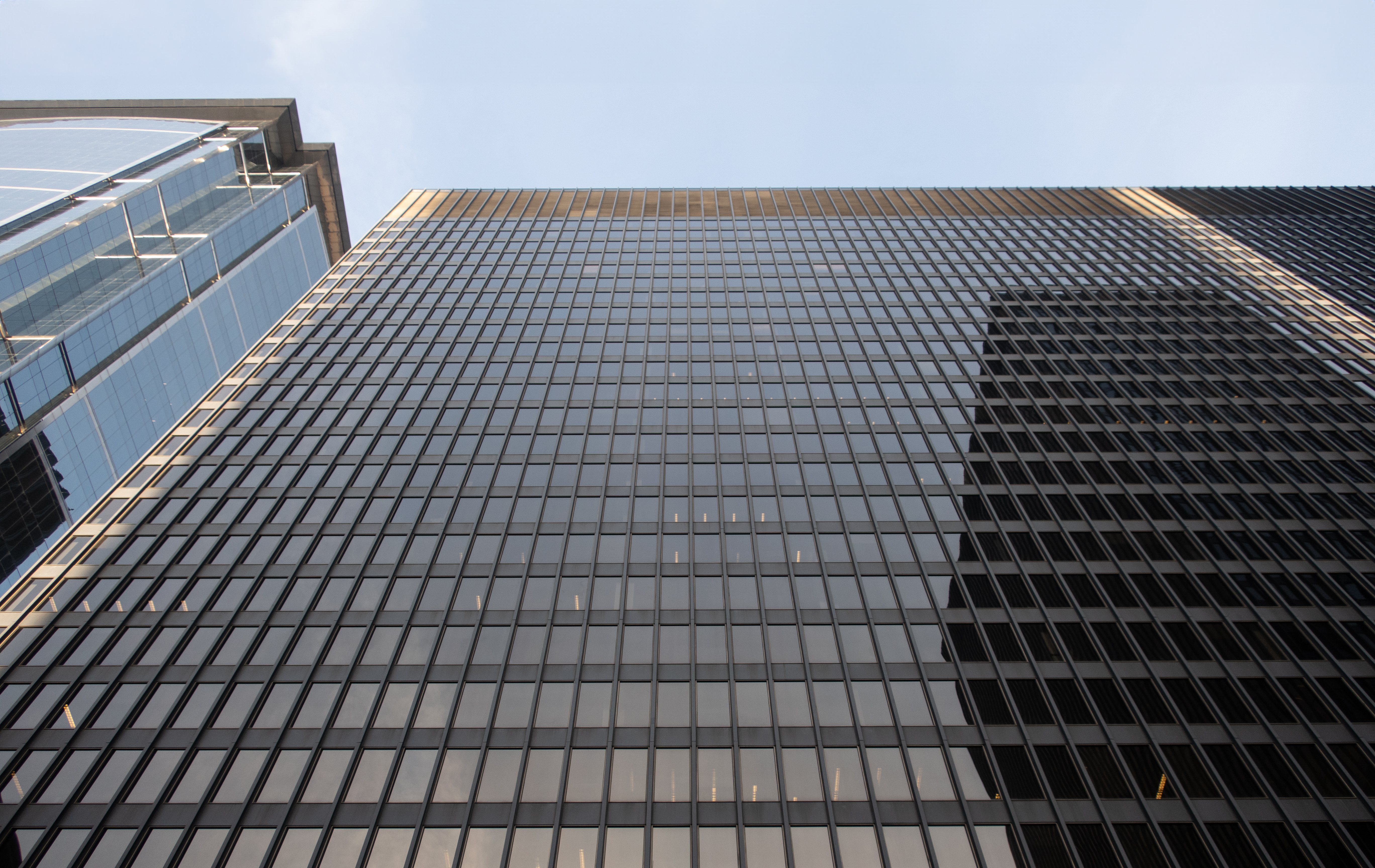The Promontory Apartments is an International Style skyscraper designed between 1946 and 1947 by Mies van der Rohe, and built between 1947 and 1949 in Chicago, IL.
Its precise street address is 5530–5532 South Shore Dr., Chicago, IL. You can also find it on the map here.
The Promontory Apartments is a structure of significant importance both for the city of Chicago and the United States as a nation. The building embodies the distinctive characteristic features of the time in which it was built and the International Style style. Because of that, the Promontory Apartments was officially included in the National Register of Historic Places on November 21st 1996.
This was the first skyscraper Mies actually got built, after having designed some concepts early in his career which were never executed.
As in those early skyscraper concepts, Mies proposed a steel and glass curtain wall facade with floor-to-ceiling windows. The developer did not approve this idea for this project, and Mies would have to wait until 900-910 North Lake Shore to see his idea realized, ironically, working with the same developer.
